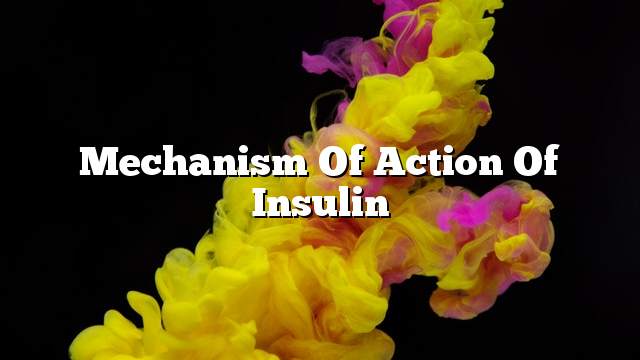Insulin
Insulin is the hormone responsible for the regulation of sugar in the body. The hormone is produced in specialized cells in the pancreas. These cells are called beta. The body’s lack of the body causes the body to be unable to use sugar from different foods, Glucose in the blood, and in this article we will show you the mechanism of action of insulin.
Mechanism of action of insulin
Insulin production
Beta cells in the pancreas produce insulin, releasing it daily at 3050 units at the healthy adult.
How insulin works when you eat
The insulin hormone starts to rise after eating for about 8-10 minutes, and increases to its highest level after half an hour to an hour and only a quarter of the food. It returns to its normal level after 90120 minutes of eating. Glucose sugar is one of the most common stimulants Helps produce insulin, and its production may be affected by many different neurotransmitter and hormonal factors.
Insulin secretion
The pancreas secrete insulin in two stages:
- Early stage: Which is when the level of glucose is high; insulin is excreted to a large extent to the level of glucose, which explains the incidence of low sugar in some people who have performed a hysterectomy or part of the small intestine, where they increase the proportion of insulin with no There is sufficient room for absorption, leading to an imbalance between the low level of glucose and the high level of insulin, and therefore gradually decrease.
- Late stage: Insulin starts at this stage rising exponentially, when the body gets glucose from outside the body such as food, and this happens for more than four hours, and it can occur at high glucose due to internal effects in the body, and this occurs for more than 24 An hour, which explains the high sugar in some people without diabetes, when the proliferation of foods containing sugars, carbohydrates.
Insulin out of the beta cell
Insulin comes out of the cell when there is a large amount of glucose inside it, and when a substance rises ATP , This process is called the process of energy within the cell.
Insulin binding with receptors
The receptors are the link between the inner medium of the cell and its outer center. After insulin is released from the cell, it begins to search for these receptors to host. These receptors are located on the surfaces of the cells spread throughout the body.
Transfer of glucose
Glucose is transported throughout the body to be converted into energy for use through the feast of distributed vectors in the body called GLUT.
- Carrier 1: This carrier is present in all tissues of the human body where it transfers the basic requirement.
- Blood 2: This carrier is the carrier of glucose inside the beta cells, working under high glucose to secrete more insulin.
- Carrier 3: In all tissues, it is the primary carrier within the nerve tissue.
- Blood 4: This muscle is found in the motor muscle and adipose tissue.
- Carrier 5: This carrier is found in the human digestive tract, liver, and sperm cells.
- Carrier 6: This is found in the liver and some other tissues.
- Carrier 7: These vectors exist in the digestive tract and in the kidneys to re-absorb glucose.
- Carrier 1: There is intestinal and renal tubules.
- Blood 2: There is a renal tubing.
For more information on the types of insulin fast and long-acting modern.
